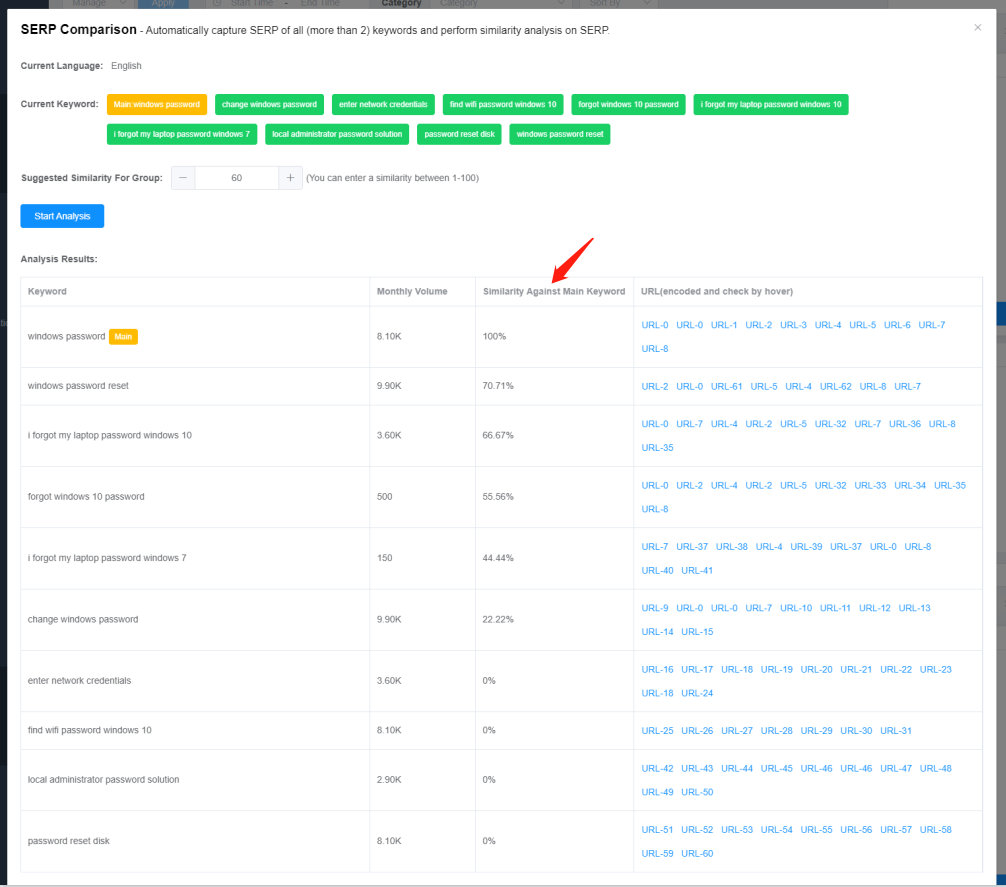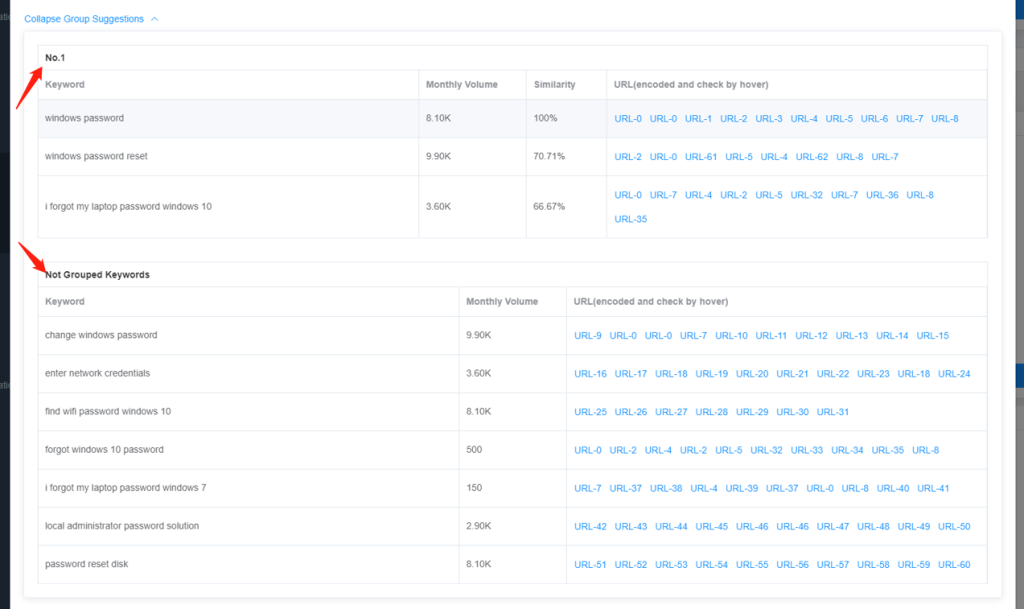How to Group Keywords?
Why Group Keywords?
Keywords are the most frequently used in daily SEO work. Keywords can be obtained in bulk with the help of Google Keyword Tool and SEM Keyword Report. After that, you have to manually classify the keywords in order to write articles for the same group of keywords. As for keyword classification, we need to integrate keywords with strong SERP correlation and similar meanings. It is also called Keyword Grouping.
In fact, the classification of keywords is very cumbersome and time-consuming, and some industries involve even tens of millions of keywords.
How to Group Keywords?
There are two common grouping methods:
- 1. Group by word matching degree
The grouping is a simple approach and requires only splitting and comparing the words or words in the keywords. Combine words with similar meanings in one group.
Examples:
– Copy hard disk and hard disk copy. Two keywords can be quickly classified into the same group when the number and meaning of words are so close that there is only a difference in word ordering.
– Copy hard disk and clone hard drive. This grouping approach does not apply in the case of a large number of synonyms.
Pros: Fast and less resource consumed
Cons: Inaccurate, especially for keywords with less than 5 words; It can’t identify synonyms.
- 2. Group by Keywords’ SERP Similarity
Keywords can be grouped based on their SERP results by using Google’s close words to complete the processing system.
Pros: Accurate
Cons: Time-consuming and high-volume manual processing
SCOHalo provides users with an automatic processing method for grouping using the keyword SERP resemblance.
(Please check our free solution if you need to group a lot of keywords: https://www.scohalo.com/serp-analyzer/)
Automated Grouping of Keywords Using SERP Results
Keywords with similar SERPs can be combined in the same group by using the SERP Comparison function.
The SERP Comparison function is available in the interface of New Keyword Group, Keyword Group Modification and Keyword Group List.
Note:
-Comparing SERP function, which is just for the comparison and analysis of keywords in a single language.
-Before a keyword group contains at least two keywords in its single language, it can compare SERPs.
-Take the interface for modifying keyword groups as an example to introduce the steps of using the “Compare SERP” function.
First of all, in the left function bar, click Keyword Group -> List. Under target keyword, click the “Modify Keywords” option.

Then, click the Start Analysis button. SCOHalo will automatically enable the AI algorithm in the background to capture the top 10 article’s URL for keywords. Then, other keywords will be compared with the main keyword for URL analysis, and keywords with high similarity will be classified into the same group.
(Note: Use the default value in case you don’t know much about the group recommendation similarity. )
The analysis results show the SERP similarities between each keyword and the main keyword. You can group keywords based on their similarity.
(Note: the article URL involved in the keywords has been coded. You can move your mouse over various URL links to see the detailed URL address. )

You can also click the Display Group Suggestions button at the bottom of the window to view the group prompts. Based on the grouping prompts, keyword groups can be added or modified, Keywords that are not grouped can be grouped separately.

